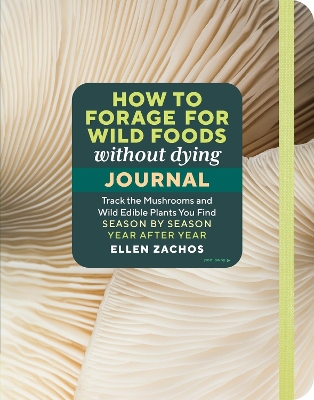Originally posted on my blog Nonstop Reader.
How to Forage for Wild Foods without Dying Journal is a beginner-friendly, accessible, and well written companion volume to the tutorial book of the same name written and curated by Ellen Zachos. Released 26th March 2024 by Hachette on their Storey imprint, it's 192 pages and is available in paperback format.
This book has an interesting format in that it presupposes zero previous knowledge on the reader's part, and also divides the plant entries by areas in which they're commonly found. The bulk of the book is for the user's record of where and when they found foragable items and for taking field notes.
It's divided into seasonal chapters with listings of commonly found species and where/when they can be safely harvested.
The book uses simple, accessible language as well as lots of clear photos to aid in identification. The author expends considerable effort covering sustainability (don't ever overforage), safety & ID, and responsible use of shrinking communal resources. The book has a North American focus, but many (most) of the plants have a much wider range, so the book will be useful to readers from outside North America.
Four stars. Since it's a personal journal and meant to be written in, this would be a good choice for gifting, home use, and for community/allotment gardens, and activity groups (bulk purchase rates available from the publisher) and smallholders/self-sufficiency folks.
Disclosure: I received an ARC at no cost from the author/publisher for review purposes.
Reviewed by annieb123 on
Reading updates
- 3 April, 2024: Started reading
- 3 April, 2024: Finished reading
- 3 April, 2024: Reviewed
